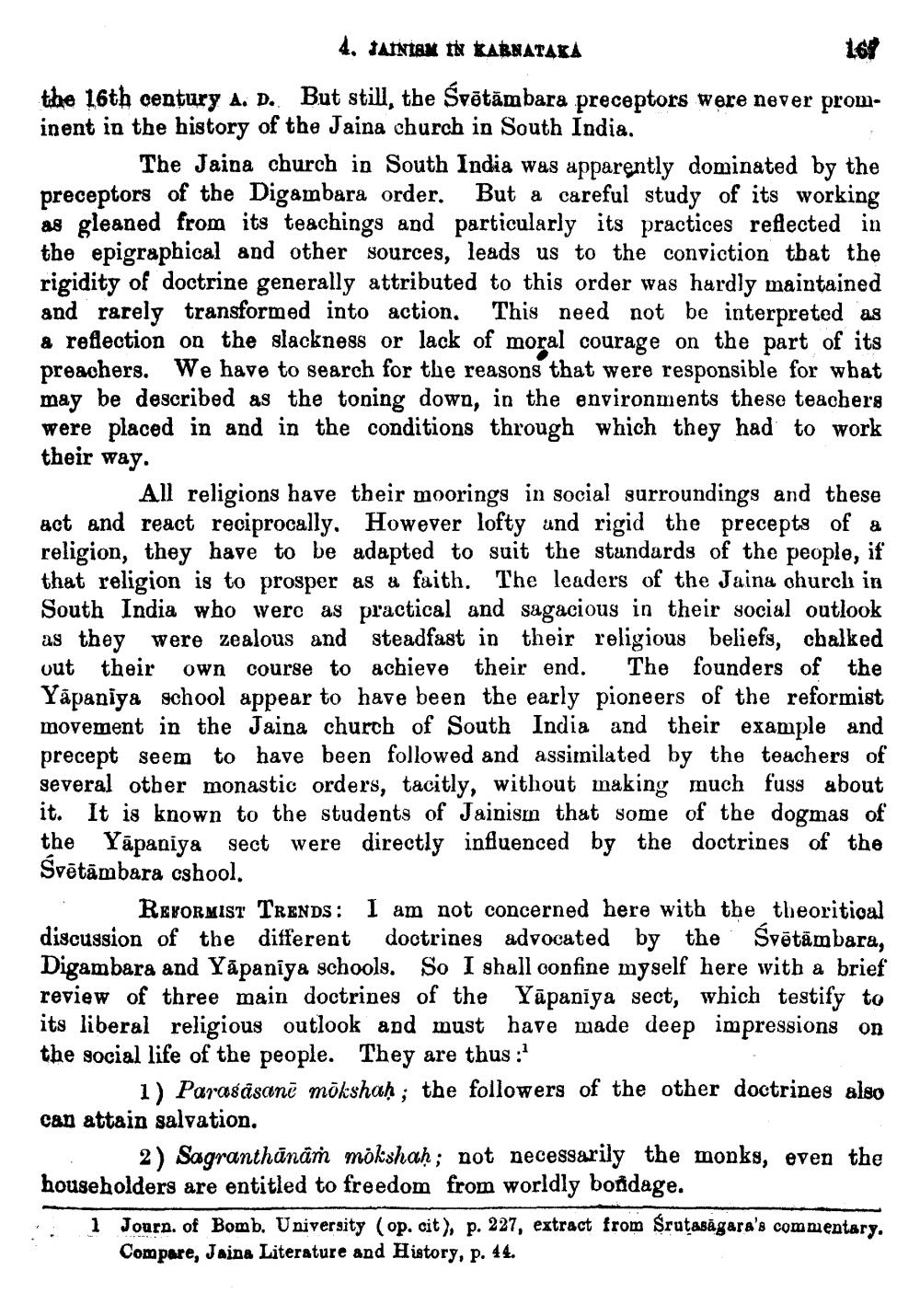________________
4. JAINISM IN KARNATAKA
167 the 16th century A. D.. But still, the Svētambara preceptors were never prominent in the history of the Jaina church in South India.
The Jaina church in South India was apparently dominated by the preceptors of the Digambara order. But a careful study of its working as gleaned from its teachings and particularly its practices reflected in the epigraphical and other sources, leads us to the conviction that the rigidity of doctrine generally attributed to this order was hardly maintained and rarely transformed into action. This need not be interpreted as a reflection on the slackness or lack of moral courage on the part of its preachers. We have to search for the reasons that were responsible for what may be described as the toning down, in the environments these teachers were placed in and in the conditions through which they had to work their way.
All religions have their moorings in social surroundings and these act and react reciprocally. However lofty and rigid the precepts of a religion, they have to be adapted to suit the standards of the people, if that religion is to prosper as a faith. The leaders of the Jaina church in South India who were as practical and sagacious in their social outlook as they were zealous and steadfast in their religious beliefs, chalked out their Own course to achieve their end. The founders of the Yapaniya school appear to have been the early pioneers of the reformist movement in the Jaina church of South India and their example and precept seem to have been followed and assimilated by the teachers of several other monastic orders, tacitly, without making much fuss about it. It is known to the students of Jainism that some of the dogmas of the Yapaniya sect were directly influenced by the doctrines of the Svētāmbara cshool.
REFORMIST TRENDS: I am not concerned here with the theoritical
discussion of the different doctrines advocated by the Svētāmbara, Digambara and Yapaniya schools. So I shall confine myself here with a brief review of three main doctrines of the Yapaniya sect, which testify to its liberal religious outlook and must have made deep impressions on the social life of the people. They are thus:1
1) Parasāsaně mokshaḥ; the followers of the other doctrines also can attain salvation.
2) Sagranthanam mokshaḥ; not necessarily the monks, even the householders are entitled to freedom from worldly bondage.
1 Journ. of Bomb. University (op. cit), p. 227, extract from Śrutasagara's commentary. Compare, Jaina Literature and History, p. 44.




